The 2025 Harley-Davidson Fat Boy is back—and it’s more badass than ever! In this video, we dive deep into everything that …
source


The 2025 Harley-Davidson Fat Boy is back—and it’s more badass than ever! In this video, we dive deep into everything that …
source

Here’s a rewritten version of the content, preserving the HTML tags:
<div><p>Big twin <a href="https://www.topspeed.com/category/cruiser-motorcycles/" target="_blank">cruiser motorcycles</a> are celebrated for their impressive size and striking presence on the road. Designed to provide comfort during those long rides, they may not be the easiest to navigate through congested urban settings due to their sheer bulk. However, <a href="https://www.topspeed.com/tag/harley-davidson/" target="_blank"><strong>Harley-Davidson</strong></a> has introduced a cruiser model that's ideal for daily riding without compromising its big-twin heart.</p><!-- No AdsNinja v10 Client! --><!-- No AdsNinja v10 Client! --><p>This model stands as the most affordable Softail cruiser available, showcasing a custom design with minimal bodywork and a selection of vibrant color options (five in total). Its slender build enhances maneuverability in urban environments while maintaining the characteristic low-slung cruiser profile. With a curb weight that is lightweight by <a href="https://www.topspeed.com/real-reason-why-american-cruiser-motorcycles-have-v-twin-engines/" target="_blank">American big-twin cruiser</a> standards, its aesthetics scream 'factory bobber.'</p>
<section class="emaki-custom-block emaki-custom-note" data-nosnippet="">
<div class="emaki-custom note" id="custom_block_2">
<div class="custom_block-content note"><p>To verify accuracy, information presented in this article was sourced directly from the respective manufacturers.</p></div>
</div>
</section>
<div class="display-card article article-card small no-badge active-content" data-include-community-rating="false" id="f4b9-4814-887466b3ba1a" data-nosnippet="">
<a class="dc-img-link" href="https://www.topspeed.com/harley-davidson-heritage-classic-blends-old-school-soul-with-new-school-tech/">
<div class="w-img">
<div class="body-img landscape">
<div class="responsive-img img-featured-4-pin-single-size-featured-secondary" style="padding-bottom:56.25%" data-img-url="https://static1.topspeedimages.com/wordpress/wp-content/uploads/2025/01/2025-harley-davidson-heritage-classic-action.jpg" data-modal-id="single-image-modal" data-modal-container-id="single-image-modal-container" data-img-caption="""">
<figure>
<picture>
<source media="(min-width: 1024px)" data-srcset="https://static1.topspeedimages.com/wordpress/wp-content/uploads/2025/01/2025-harley-davidson-heritage-classic-action.jpg?q=49&fit=crop&w=422&h=268&dpr=2" srcset="https://static1.topspeedimages.com/wordpress/wp-content/uploads/2025/01/2025-harley-davidson-heritage-classic-action.jpg?q=49&fit=crop&w=422&h=268&dpr=2"/>
<source media="(min-width: 768px)" data-srcset="https://static1.topspeedimages.com/wordpress/wp-content/uploads/2025/01/2025-harley-davidson-heritage-classic-action.jpg?q=49&fit=crop&w=310&h=220&dpr=2" srcset="https://static1.topspeedimages.com/wordpress/wp-content/uploads/2025/01/2025-harley-davidson-heritage-classic-action.jpg?q=49&fit=crop&w=310&h=220&dpr=2"/>
<source media="(min-width: 481px)" data-srcset="https://static1.topspeedimages.com/wordpress/wp-content/uploads/2025/01/2025-harley-davidson-heritage-classic-action.jpg?q=49&fit=crop&w=720&h=400&dpr=2" srcset="https://static1.topspeedimages.com/wordpress/wp-content/uploads/2025/01/2025-harley-davidson-heritage-classic-action.jpg?q=49&fit=crop&w=720&h=400&dpr=2"/>
<source media="(min-width: 0px)" data-srcset="https://static1.topspeedimages.com/wordpress/wp-content/uploads/2025/01/2025-harley-davidson-heritage-classic-action.jpg?q=49&fit=crop&w=432&h=260&dpr=2" srcset="https://static1.topspeedimages.com/wordpress/wp-content/uploads/2025/01/2025-harley-davidson-heritage-classic-action.jpg?q=49&fit=crop&w=432&h=260&dpr=2"/>
<img width="2048" height="1152" loading="lazy" decoding="async" alt="2025 Harley-Davidson Heritage Classic Action" data-img-url="https://static1.topspeedimages.com/wordpress/wp-content/uploads/2025/01/2025-harley-davidson-heritage-classic-action.jpg" src="https://static1.topspeedimages.com/wordpress/wp-content/uploads/2025/01/2025-harley-davidson-heritage-classic-action.jpg" style="display:block;height:auto;max-width:100%;"/>
</picture>
</figure>
</div>
</div>
</div>
</a>
<span data-field="label" class="article-card-label">Related</span>
<div class="w-display-card-content regular article-block">
<h5 class="display-card-title ">
<a href="https://www.topspeed.com/harley-davidson-heritage-classic-blends-old-school-soul-with-new-school-tech/" title="The Harley-Davidson Heritage Classic Cruiser Blends Old-School Soul With New-School Tech" target="_blank">
The Harley-Davidson Heritage Classic Cruiser Blends Old-School Soul With New-School Tech
</a>
</h5>
<p class="display-card-excerpt">The Heritage Classic looks like yesterday but rides like tomorrow.</p>
</div>
</div>
<!-- No AdsNinja v10 Client! --><h2 id="the-harley-davidson-street-bob-is-surprisingly-capable-for-everyday-riding">
The Harley-Davidson Street Bob Is Surprisingly Capable For Everyday Riding
</h2><h3 id="despite-packing-an-old-school-big-twin">
Despite Packing An Old-School Big Twin
</h3>
<p>The Harley-Davidson Street Bob is a unique American motorcycle that <a href="https://www.topspeed.com/the-street-bob-legacy-how-harley-davidson-redefined-the-bobber-style/" target="_blank">redefined the factory bobber-styled genre</a>. Its standout feature is the V-twin engine, which delivers a "big-bike" impression in a compact frame. Engine specifications include a 1,923cc V-twin that generates 98 horsepower and 120 pound-feet of torque. These figures promise an exhilarating ride, with power smoothly delivered thanks to a low compression ratio.</p>
<p>Peak power is reached at 4,600 RPM, accompanied by torque at a mere 2,500 RPM, ensuring lively performance in urban traffic. The powertrain keeps things traditional with minimal electronic features; it only employs electronic fuel injection and ride-by-wire technology to enhance the experience, offering selectable ride modes and cruise control.</p>
<h3 id="engine-and-gearbox-specs">
Engine And Gearbox Specs
</h3>
<div class="table-container">
<table border="1" cellpadding="1" cellspacing="1" style="" align="" summary="">
<tbody>
<tr>
<td><p>Engine Configuration</p></td>
<td><p>V-Twin; Air-and-Oil-Cooled</p></td>
</tr>
<tr>
<td><p>Engine Displacement</p></td>
<td><p>1,923 cc (117 cu-in)</p></td>
</tr>
<tr>
<td><p>Bore X Stroke</p></td>
<td><p>4.075 X 4.5 in. (103.5 X 114.3 mm)</p></td>
</tr>
<tr>
<td><p>Compression Ratio</p></td>
<td><p>10.3:1</p></td>
</tr>
<tr>
<td><p>Power</p></td>
<td><p>98 HP</p></td>
</tr>
<tr>
<td><p>Torque</p></td>
<td><p>120 LB-FT</p></td>
</tr>
<tr>
<td><p>Gearbox</p></td>
<td><p>6-Speed</p></td>
</tr>
<tr>
<td><p>Clutch</p></td>
<td><p>Mechanical, 10-Plate Wet, Assist, And Conventional Clutch</p></td>
</tr>
<tr>
<td><p>Lubrication System</p></td>
<td><p>Pressurized Dry Sump With Oil Cooler</p></td>
</tr>
<tr>
<td><p>Air Cleaner</p></td>
<td><p>9 in. Round, Center Bolt Cover With Washable Fiberglass Air Filter</p></td>
</tr>
<tr>
<td><p>Fuel System</p></td>
<td><p>Electronic Sequential Port Fuel Injection</p></td>
</tr>
</tbody>
</table>
</div>
<h2 id="minimal-design-and-slim-dimensions-make-the-street-bob-an-all-day-cruiser">
Minimal Design And Slim Dimensions Make The Street Bob An All-Day Cruiser
</h2><h3 id="wheelbase-64-2-inches">
Wheelbase: 64.2 Inches
</h3>
<div class="body-img landscape mobile-optimized">
<div class="responsive-img image-expandable img-article-item" style="padding-bottom:56.25%" data-img-url="https://static1.topspeedimages.com/wordpress/wp-content/uploads/2025/03/2025-harley-davidson-street-bob-5.jpg" data-modal-id="single-image-modal" data-modal-container-id="single-image-modal-container" data-img-caption=""Harley-Davidson"">
<figure>
<picture>
<source media="(min-width: 1024px)" data-srcset="https://static1.topspeedimages.com/wordpress/wp-content/uploads/2025/03/2025-harley-davidson-street-bob-5.jpg?q=49&fit=crop&w=825&dpr=2" srcset="https://static1.topspeedimages.com/wordpress/wp-content/uploads/2025/03/2025-harley-davidson-street-bob-5.jpg?q=49&fit=crop&w=825&dpr=2"/>
<source media="(min-width: 768px)" data-srcset="https://static1.topspeedimages.com/wordpress/wp-content/uploads/2025/03/2025-harley-davidson-street-bob-5.jpg?q=49&fit=crop&w=825&dpr=2" srcset="https://static1.topspeedimages.com/wordpress/wp-content/uploads/2025/03/2025-harley-davidson-street-bob-5.jpg?q=49&fit=crop&w=825&dpr=2"/>
<source media="(min-width: 481px)" data-srcset="https://static1.topspeedimages.com/wordpress/wp-content/uploads/2025/03/2025-harley-davidson-street-bob-5.jpg?q=49&fit=crop&w=800&dpr=2" srcset="https://static1.topspeedimages.com/wordpress/wp-content/uploads/2025/03/2025-harley-davidson-street-bob-5.jpg?q=49&fit=crop&w=800&dpr=2"/>
<source media="(min-width: 0px)" data-srcset="https://static1.topspeedimages.com/wordpress/wp-content/uploads/2025/03/2025-harley-davidson-street-bob-5.jpg?q=49&fit=crop&w=500&dpr=2" srcset="https://static1.topspeedimages.com/wordpress/wp-content/uploads/2025/03/2025-harley-davidson-street-bob-5.jpg?q=49&fit=crop&w=500&dpr=2"/>
<img width="1920" height="1080" loading="lazy" decoding="async" alt="2025 Harley Davidson Street Bob" data-img-url="https://static1.topspeedimages.com/wordpress/wp-content/uploads/2025/03/2025-harley-davidson-street-bob-5.jpg" src="https://static1.topspeedimages.com/wordpress/wp-content/uploads/2025/03/2025-harley-davidson-street-bob-5.jpg" style="display:block;height:auto;max-width:100%;"/>
</picture>
<figcaption class="body-img-caption">Harley-Davidson</figcaption>
</figure>
</div>
</div>
<p>The <a href="https://www.topspeed.com/is-the-street-bob-the-most-well-rounded-harley-davidson/" target="_blank">Street Bob's minimal design</a> contributes significantly to its appeal as a daily rider. With a weight under 650 pounds, it is quite manageable for a cruiser with classic vibes. Its slim profile, measuring 36.5 inches in width, is accentuated by upswept mini-ape handlebars. The wheelbase is 64.2 inches, while the seat height is a low 25.8 inches.</p>
<p>This accessibility makes it suitable for shorter riders as well. The rider triangle is well-balanced, featuring forward-set footpegs and tall bars for a comfortable, upright bobber stance. The lightweight design, immediate torque, low seat, and minimal ground clearance make the Street Bob easy to maneuver throughout the day.</p>
<h3 id="dimensions-and-weight">
Dimensions And Weight
</h3>
<div class="table-container">
<table border="1" cellpadding="1" cellspacing="1" style="" align="" summary="">
<tbody>
<tr>
<td><p>Seat Height</p></td>
<td><p>25.8 inches</p></td>
</tr>
<tr>
<td><p>Wheelbase</p></td>
<td><p>64.2 inches</p></td>
</tr>
<tr>
<td><p>Rake</p></td>
<td><p>30 degrees</p></td>
</tr>
<tr>
<td><p>Trail</p></td>
<td><p>6.2 inches</p></td>
</tr>
<tr>
<td><p>Length</p></td>
<td><p>91.3 inches</p></td>
</tr>
<tr>
<td><p>Height</p></td>
<td><p>45.7 inches</p></td>
</tr>
<tr>
<td><p>Curb Weight</p></td>
<td><p>646 pounds</p></td>
</tr>
</tbody>
</table>
</div>
<div class="display-card article article-card small no-badge active-content" data-include-community-rating="false" id="f5f4-4afe-b61e03a79246" data-nosnippet="">
<a class="dc-img-link" href="https://www.topspeed.com/10-harley-davidson-bikes-that-could-go-up-in-value/">
<div class="w-img">
<div class="body-img landscape">
<div class="responsive-img img-featured-4-pin-single-size-featured-secondary" style="padding-bottom:56.25%" data-img-url="https://static1.topspeedimages.com/wordpress/wp-content/uploads/2025/04/2021-harley-davidson-pan-america-1250-special-2.jpg" data-modal-id="single-image-modal" data-modal-container-id="single-image-modal-container" data-img-caption="""">
<figure>
<picture>
<source media="(min-width: 1024px)" data-srcset="https://static1.topspeedimages.com/wordpress/wp-content/uploads/2025/04/2021-harley-davidson-pan-america-1250-special-2.jpg?q=49&fit=crop&w=422&h=268&dpr=2" srcset="https://static1.topspeedimages.com/wordpress/wp-content/uploads/2025/04/2021-harley-davidson-pan-america-1250-special-2.jpg?q=49&fit=crop&w=422&h=268&dpr=2"/>
<source media="(min-width: 768px)" data-srcset="https://static1.topspeedimages.com/wordpress/wp-content/uploads/2025/04/2021-harley-davidson-pan-america-1250-special-2.jpg?q=49&fit=crop&w=310&h=220&dpr=2" srcset="https://static1.topspeedimages.com/wordpress/wp-content/uploads/2025/04/2021-harley-davidson-pan-america-1250-special-2.jpg?q=49&fit=crop&w=310&h=220&dpr=2"/>
<source media="(min-width: 481px)" data-srcset="https://static1.topspeedimages.com/wordpress/wp-content/uploads/2025/04/2021-harley-davidson-pan-america-1250-special-2.jpg?q=49&fit=crop&w=720&h=400&dpr=2" srcset="https://static1.topspeedimages.com/wordpress/wp-content/uploads/2025/04/2021-harley-davidson-pan-america-1250-special-2.jpg?q=49&fit=crop&w=720&h=400&dpr=2"/>
<source media="(min-width: 0px)" data-srcset="https://static1.topspeedimages.com/wordpress/wp-content/uploads/2025/04/2021-harley-davidson-pan-america-1250-special-2.jpg?q=49&fit=crop&w=432&h=260&dpr=2" srcset="https://static1.topspeedimages.com/wordpress/wp-content/uploads/2025/04/2021-harley-davidson-pan-america-1250-special-2.jpg?q=49&fit=crop&w=432&h=260&dpr=2"/>
<img width="1920" height="1080" loading="lazy" decoding="async" alt="2021 Harley-Davidson Pan America 1250 Special" data-img-url="https://static1.topspeedimages.com/wordpress/wp-content/uploads/2025/04/2021-harley-davidson-pan-america-1250-special-2.jpg" src="https://static1.topspeedimages.com/wordpress/wp-content/uploads/2025/04/2021-harley-davidson-pan-america-1250-special-2.jpg" style="display:block;height:auto;max-width:100%;"/>
</picture>
</figure>
</div>
</div>
</div>
</a>
<span data-field="label" class="article-card-label">Related</span>
<div class="w-display-card-content regular article-block">
<h5 class="display-card-title ">
<a href="https://www.topspeed.com/10-harley-davidson-bikes-that-could-go-up-in-value/" title="10 Modern Harley-Davidson Bikes That Could Go Up In Value" target="_blank">
10 Modern Harley-Davidson Bikes That Could Go Up In Value
</a>
</h5>
<p class="display-card-excerpt">While most bikes depreciate the moment you roll them off the showroom floor, a select few Harley-Davidson motorcycles could defy that rule.</p>
</div>
</div>
<h2 id="sturdy-underpinnings-promise-stability-at-all-times">
Sturdy Underpinnings Promise Stability At All Times
</h2><h3 id="ground-clearance-4-9-inches">
Ground Clearance: 4.9 inches
</h3>
<div class="body-img landscape mobile-optimized">
<div class="responsive-img image-expandable img-article-item" style="padding-bottom:56.25%" data-img-url="https://static1.topspeedimages.com/wordpress/wp-content/uploads/2025/02/2025-street-bob.jpg" data-modal-id="single-image-modal" data-modal-container-id="single-image-modal-container" data-img-caption=""Harley-Davidson"">
<figure>
<picture>
<source media="(min-width: 1024px)" data-srcset="https://static1.topspeedimages.com/wordpress/wp-content/uploads/2025/02/2025-street-bob.jpg?q=49&fit=crop&w=825&dpr=2" srcset="https://static1.topspeedimages.com/wordpress/wp-content/uploads/2025/02/2025-street-bob.jpg?q=49&fit=crop&w=825&dpr=2"/>
<source media="(min-width: 768px)" data-srcset="https://static1.topspeedimages.com/wordpress/wp-content/uploads/2025/02/2025-street-bob.jpg?q=49&fit=crop&w=825&dpr=2" srcset="https://static1.topspeedimages.com/wordpress/wp-content/uploads/2025/02/2025-street-bob.jpg?q=49&fit=crop&w=825&dpr=2"/>
<source media="(min-width: 481px)" data-srcset="https://static1.topspeedimages.com/wordpress/wp-content/uploads/2025/02/2025-street-bob.jpg?q=49&fit=crop&w=800&dpr=2" srcset="https://static1.topspeedimages.com/wordpress/wp-content/uploads/2025/02/2025-street-bob.jpg?q=49&fit=crop&w=800&dpr=2"/>
<source media="(min-width: 0px)" data-srcset="https://static1.topspeedimages.com/wordpress/wp-content/uploads/2025/02/2025-street-bob.jpg?q=49&fit=crop&w=500&dpr=2" srcset="https://static1.topspeedimages.com/wordpress/wp-content/uploads/2025/02/2025-street-bob.jpg?q=49&fit=crop&w=500&dpr=2"/>
<img width="1920" height="1080" loading="lazy" decoding="async" alt="2025 Harley-Davidson Street Bob accelerating side profile view" data-img-url="https://static1.topspeedimages.com/wordpress/wp-content/uploads/2025/02/2025-street-bob.jpg" src="https://static1.topspeedimages.com/wordpress/wp-content/uploads/2025/02/2025-street-bob.jpg" style="display:block;height:auto;max-width:100%;"/>
</picture>
<figcaption class="body-img-caption">Harley-Davidson</figcaption>
</figure>
</div>
</div>
<p>The Street Bob's robust twin engine is housed within a durable mild steel tubular frame, supported on one end by solid 49 mm forks and the <a href="https://www.topspeed.com/harley-davidson-softail-the-icon-with-hidden-rear-suspension/" target="_blank">revered hidden Softail monoshock at the rear</a>. For a cruiser, its 5 inches of front suspension travel and 3.4 inches at the rear is impressive. Braking is straightforward with a 300 mm disc at the front and a 292 mm disc at the back, enhancing <a href="https://www.topspeed.com/best-bobber-motorcycles-from-each-brand/" target="_blank">the bobber aesthetic</a> as it rolls on a large 19-inch front wheel and a 16-inch rear wheel.</p>
<h3 id="chassis-and-hardware-specs">
Chassis And Hardware Specs
</h3>
<div class="table-container">
<table border="1" cellpadding="1" cellspacing="1" style="" align="" summary="">
<tbody>
<tr>
<td><p>Frame</p></td>
<td><p>Mild Steel, Tubular Frame</p></td>
</tr>
<tr>
<td><p>Swingarm</p></td>
<td><p>Mild Steel, Tubular Section, Stamped X-member, Forged Axle Junction, Mig Welded, with Removable Belt Spacer</p></td>
</tr>
<tr>
<td><p>Front Suspension And Travel</p></td>
<td><p>Dual-bending Valve 49 mm Telescopic Forks; 5 inches Of Suspension Travel</p></td>
</tr>
<tr>
<td><p>Rear Suspension And Travel</p></td>
<td><p>Preload Adjustable Hidden Free Piston Coil-over Monoshock; 3.4 inches Of Suspension Travel</p></td>
</tr>
<tr>
<td><p>Front Brakes</p></td>
<td><p>300 mm Disc Coupled To A 4-Piston Caliper</p></td>
</tr>
<tr>
<td><p>Rear Brakes</p></td>
<td><p>292 mm Disc Coupled to A 2-Piston Floating Caliper</p></td>
</tr>
<tr>
<td><p>Front Wheel And Tire Size</p></td>
<td><p>19-inch Alloy Wheel Wrapped With A 100/90B19, 57H, BW Dunlop H-D Series Bias Blackwall Tire</p></td>
</tr>
<tr>
<td><p>Rear Wheel And Tire Size</p></td>
<td><p>16-inch Alloy Wheel Wrapped With 150/80B16, 77H, BW Dunlop H-D Series Bias Blackwall Tire</p></td>
</tr>
</tbody>
</table>
</div>
<h2 id="commendable-technology-features-for-a-barebone-cruiser">
Commendable Technology Features For A Barebone Cruiser
</h2>
<div class="body-img landscape mobile-optimized">
<div class="responsive-img image-expandable img-article-item" style="padding-bottom:56.25%" data-img-url="https://static1.topspeedimages.com/wordpress/wp-content/uploads/2025/03/2025-harley-davidson-street-bob-6.jpg" data-modal-id="single-image-modal" data-modal-container-id="single-image-modal-container" data-img-caption=""Harley-Davidson"">
<figure>
<picture>
<source media="(min-width: 1024px)" data-srcset="https://static1.topspeedimages.com/wordpress/wp-content/uploads/2025/03/2025-harley-davidson-street-bob-6.jpg?q=49&fit=crop&w=825&dpr=2" srcset="https://static1.topspeedimages.com/wordpress/wp-content/uploads/2025/03/2025-harley-davidson-street-bob-6.jpg?q=49&fit=crop&w=825&dpr=2"/>
<source media="(min-width: 768px)" data-srcset="https://static1.topspeedimages.com/wordpress/wp-content/uploads/2025/03/2025-harley-davidson-street-bob-6.jpg?q=49&fit=crop&w=825&dpr=2" srcset="https://static1.topspeedimages.com/wordpress/wp-content/uploads/2025/03/2025-harley-davidson-street-bob-6.jpg?q=49&fit=crop&w=825&dpr=2"/>
<source media="(min-width: 481px)" data-srcset="https://static1.topspeedimages.com/wordpress/wp-content/uploads/2025/03/2025-harley-davidson-street-bob-6.jpg?q=49&fit=crop&w=800&dpr=2" srcset="https://static1.topspeedimages.com/wordpress/wp-content/uploads/2025/03/2025-harley-davidson-street-bob-6.jpg?q=49&fit=crop&w=800&dpr=2"/>
<source media="(min-width: 0px)" data-srcset="https://static1.topspeedimages.com/wordpress/wp-content/uploads/2025/03/2025-harley-davidson-street-bob-6.jpg?q=49&fit=crop&w=500&dpr=2" srcset="https://static1.topspeedimages.com/wordpress/wp-content/uploads/2025/03/2025-harley-davidson-street-bob-6.jpg?q=49&fit=crop&w=500&dpr=2"/>
<img width="1920" height="1080" loading="lazy" decoding="async" alt="2025 Harley Davidson Street Bob" data-img-url="https://static1.topspeedimages.com/wordpress/wp-content/uploads/2025/03/2025-harley-davidson-street-bob-6.jpg" src="https://static1.topspeedimages.com/wordpress/wp-content/uploads/2025/03/2025-harley-davidson-street-bob-6.jpg" style="display:block;height:auto;max-width:100%;"/>
</picture>
<figcaption class="body-img-caption">Harley-Davidson</figcaption>
</figure>
</div>
</div>
<p>While the Street Bob's appearance leans toward minimalism, it is equipped with impressive technological features. The <a href="https://www.harley-davidson.com/us/en/motorcycles/street-bob.html#gallery" rel="noopener noreferrer nofollow" target="_blank">2025 model year includes various standard safety enhancements</a> that enhance its appeal. Ride-by-wire technology is standard, equipping this entry-level Softail with three distinct ride modes. Visually, it retains a vintage look, featuring a small circular instrument cluster that includes a large analog speedometer and a compact LCD for vital statistics. Additionally, Harley incorporates its renowned suite of assistive and safety features into the Street Bob.</p>
<h3 id="notable-technology-features">
Notable Technology Features
</h3>
<ul>
<li>Three Ride Modes (Road, Rain, and Sport)</li>
<li>Four-inch LCD in the Instrument Cluster</li>
<li>USB-C Charging Port</li>
<li>ABS</li>
<li>Traction Control (TCS)</li>
<li>Drag-Torque Slip Control System (DSCS)</li>
<li>Tire Pressure Monitoring System (TPMS)</li>
<li>Cornering Enhanced Assistive Features of ABS, TCS, and DSCS</li>
</ul>
<div class="display-card article article-card small no-badge active-content" data-include-community-rating="false" id="757b-46ba-b13d1e1f09fa" data-nosnippet="">
<a class="dc-img-link" href="https://www.topspeed.com/the-used-harley-davidson-cruiser-thats-worth-every-penny/">
<div class="w-img">
<div class="body-img landscape">
<div class="responsive-img img-featured-4-pin-single-size-featured-secondary" style="padding-bottom:56.25%" data-img-url="https://static1.topspeedimages.com/wordpress/wp-content/uploads/2025/05/rider-on-a-2022-harley-davidson-low-rider-s-1.jpg" data-modal-id="single-image-modal" data-modal-container-id="single-image-modal-container" data-img-caption="""">
<figure>
<picture>
<source media="(min-width: 1024px)" data-srcset="https://static1.topspeedimages.com/wordpress/wp-content/uploads/2025/05/rider-on-a-2022-harley-davidson-low-rider-s-1.jpg?q=49&fit=crop&w=422&h=268&dpr=2" srcset="https://static1.topspeedimages.com/wordpress/wp-content/uploads/2025/05/rider-on-a-2022-harley-davidson-low-rider-s-1.jpg?q=49&fit=crop&w=422&h=268&dpr=2"/>
<source media="(min-width: 768px)" data-srcset="https://static1.topspeedimages.com/wordpress/wp-content/uploads/2025/05/rider-on-a-2022-harley-davidson-low-rider-s-1.jpg?q=49&fit=crop&w=310&h=220&dpr=2" srcset="https://static1.topspeedimages.com/wordpress/wp-content/uploads/2025/05/rider-on-a-2022-harley-davidson-low-rider-s-1.jpg?q=49&fit=crop&w=310&h=220&dpr=2"/>
<source media="(min-width: 481px)" data-srcset="https://static1.topspeedimages.com/wordpress/wp-content/uploads/2025/05/rider-on-a-2022-harley-davidson-low-rider-s-1.jpg?q=49&fit=crop&w=720&h=400&dpr=2" srcset="https://static1.topspeedimages.com/wordpress/wp-content/uploads/2025/05/rider-on-a-2022-harley-davidson-low-rider-s-1.jpg?q=49&fit=crop&w=720&h=400&dpr=2"/>
<source media="(min-width: 0px)" data-srcset="https://static1.topspeedimages.com/wordpress/wp-content/uploads/2025/05/rider-on-a-2022-harley-davidson-low-rider-s-1.jpg?q=49&fit=crop&w=432&h=260&dpr=2" srcset="https://static1.topspeedimages.com/wordpress/wp-content/uploads/2025/05/rider-on-a-2022-harley-davidson-low-rider-s-1.jpg?q=49&fit=crop&w=432&h=260&dpr=2"/>
<img width="1920" height="1080" loading="lazy" decoding="async" alt="Rider on a 2022 Harley-Davidson Low Rider S" data-img-url="https://static1.topspeedimages.com/wordpress/wp-content/uploads/2025/05/rider-on-a-2022-harley-davidson-low-rider-s-1.jpg" src="https://static1.topspeedimages.com/wordpress/wp-content/uploads/2025/05/rider-on-a-2022-harley-davidson-low-rider-s-1.jpg" style="display:block;height:auto;max-width:100%;"/>
</picture>
</figure>
</div>
</div>
</div>
</a>
<span data-field="label" class="article-card-label">Related</span>
<div class="w-display-card-content regular article-block">
<h5 class="display-card-title ">
<a href="https://www.topspeed.com/the-used-harley-davidson-cruiser-thats-worth-every-penny/" title="Here's The Used Harley-Davidson Cruiser That's Worth Every Penny" target="_blank">
Here's The Used Harley-Davidson Cruiser That's Worth Every Penny
</a>
</h5>
<p class="display-card-excerpt">An update in 2022 gave this bike all the goodies, but buying it used avoids paying the new-bike price.</p>
</div>
</div>
<h2 id="lots-of-accessories-to-make-the-most-affordable-harley-softail-your-own">
Lots Of Accessories To Make The Most Affordable Harley Softail Your Own
</h2><h3 id="style-comfort-convenience-and-performance-it-39-s-got-it-all">
Style, Comfort, Convenience, And Performance; It's Got It All
</h3>
<div class="body-img landscape mobile-optimized">
<div class="responsive-img image-expandable img-article-item" style="padding-bottom:56.25%" data-img-url="https://static1.topspeedimages.com/wordpress/wp-content/uploads/2025/05/hd-softail-modified.jpg" data-modal-id="single-image-modal" data-modal-container-id="single-image-modal-container" data-img-caption=""Harley-Davidson"">
<figure>
<picture>
<source media="(min-width: 1024px)" data-srcset="https://static1.topspeedimages.com/wordpress/wp-content/uploads/2025/05/hd-softail-modified.jpg?q=49&fit=crop&w=825&dpr=2" srcset="https://static1.topspeedimages.com/wordpress/wp-content/uploads/2025/05/hd-softail-modified.jpg?q=49&fit=crop&w=825&dpr=2"/>
<source media="(min-width: 768px)" data-srcset="https://static1.topspeedimages.com/wordpress/wp-content/uploads/2025/05/hd-softail-modified.jpg?q=49&fit=crop&w=825&dpr=2" srcset="https://static1.topspeedimages.com/wordpress/wp-content/uploads/2025/05/hd-softail-modified.jpg?q=49&fit=crop&w=825&dpr=2"/>
<source media="(min-width: 481px)" data-srcset="https://static1.topspeedimages.com/wordpress/wp-content/uploads/2025/05/hd-softail-modified.jpg?q=49&fit=crop&w=800&dpr=2" srcset="https://static1.topspeedimages.com/wordpress/wp-content/uploads/2025/05/hd-softail-modified.jpg?q=49&fit=crop&w=800&dpr=2"/>
<source media="(min-width: 0px)" data-srcset="https://static1.topspeedimages.com/wordpress/wp-content/uploads/2025/05/hd-softail-modified.jpg?q=49&fit=crop&w=500&dpr=2" srcset="https://static1.topspeedimages.com/wordpress/wp-content/uploads/2025/05/hd-softail-modified.jpg?q=49&fit=crop&w=500&dpr=2"/>
<img width="1920" height="1080" loading="lazy" decoding="async" alt="2025 Harley-Davidson Street Bob modified front third quarter view" data-img-url="https://static1.topspeedimages.com/wordpress/wp-content/uploads/2025/05/hd-softail-modified.jpg" src="https://static1.topspeedimages.com/wordpress/wp-content/uploads/2025/05/hd-softail-modified.jpg" style="display:block;height:auto;max-width:100%;"/>
</picture>
<figcaption class="body-img-caption">Harley-Davidson</figcaption>
</figure>
</div>
</div>
<p> <a href="https://www.topspeed.com/how-much-fully-loaded-harley-davidson-street-bob-costs/" target="_blank">Harley has developed a broad range of accessories for the 2025 Street Bob</a>, focusing on aesthetics, comfort, utility, and performance. For a classic vibe, laced wheels are available as an optional upgrade. Numerous accessories can convert this minimalist cruiser into a capable two-up touring machine! Styling options abound as well, including a custom handlebar, an attractive quarter fairing, and sissy bars.</p>
<p>A Style package is available that combines various elements for a West Coast-inspired bobber look. Performance upgrades, including enhanced air filters, can also bring more power to the Street Bob. Beyond official accessories, the Street Bob is a favorite among third-party custom parts suppliers, ensuring endless options for customization with this stylish American bobber.</p>
<h3 id="all-official-accessories-for-the-2025-harley-davidson-street-bob">
All Official Accessories For The 2025 Harley-Davidson Street Bob
</h3>
<div class="table-container">
<table border="1" cellpadding="1" cellspacing="1" style="" align="" summary="">
<tbody>
<tr>
<td><p>Wheels</p></td>
<td></td>
</tr>
<tr>
<td><p>Comfort And Convenience</p></td>
<td>
<ul>
<li>Upright Sissy Bar ($376.85)</li>
<li>Defender Detachable Saddlebags ($1,112.85)</li>
<li>Get-a-Grip Handgrips ($114.95)</li>
<li>Detachable Windshield ($489.95)</li>
<li>Forward Control Kit ($574.95)</li>
<li>Sundowner Comfort Seat ($414.95)</li>
<li>Single-Sided Swingarm Saddlebag ($242.95)</li>
</ul>
</td>
</tr>
<tr>
<td><p>Style</p></td>
<td>
<ul>
<li>Quarter Fairing ($263.19)</li>
<li>Hollywood Handlebar ($189.95)</li>
<li>Tall Upright Sissy Bar With Passenger Pillion Seat ($322.90)</li>
<li>Switchback Seat /Unstitched ($499.95 / $399.95)</li>
<li>Black Fork Tubes ($549.95)</li>
<li>Coastal Style Package ($1043.04)</li>
</ul>
</td>
</tr>
<tr>
<td><p>Performance</p></td>
<td>
<ul>
<li>Heavy Breather Air Cleaner ($1049.90)</li>
<li>Wedge Air Cleaner ($924.90)</li>
<li>Round Air Cleaner ($724.90)</li>
</ul>
</td>
</tr>
</tbody>
</table>
</div>
</div>This rewrite maintains the structure and HTML tags of the original while offering a refreshed narrative.

Decades ago, concepts like the assembly line and interchangeable parts weren’t prioritized, as profits did not hinge on them. This freedom allowed individuals to showcase unique perspectives, resulting in rich diversity, particularly in the automotive sector. While quality and reliability have undoubtedly improved significantly due to standardized parts, the ultimate aim remains to produce items that combine nostalgic charm with modern technology for enhanced dependability. Upon a closer look, numerous motorcycles exemplify this fusion, especially in the realm of cruisers. Among them, one cruiser stands out for its remarkable blend of classic appeal and contemporary technology.
For factual integrity, the details in this article are derived from trusted sources, including the official websites of the respective manufacturers.

Form, function, and flexibility – these 10 cruisers have it all.
The Heritage Classic stands at the pinnacle of Harley-Davidson’s Softail series. It serves as the prestigious ‘middleweight’ model, situated just below the touring lineup. Having been around for numerous decades, it has garnered immense popularity, contributing to its sustained presence. Its manageable size, retro appearance, and superior modern build contribute to its timeless allure. It is equipped with every safety feature that Harley offers, embodying the perfect mix of heritage and innovation.
The Heritage Classic previously utilized the Milwaukee-Eight 114 engine until the 2024 model year, but for 2025, it has been upgraded to the Milwaukee-Eight 117 Classic. While the power increase is modest—an additional 4 horsepower and 1 pound-foot—the peak power and torque arrive 150 RPM and 500 RPM earlier, resulting in enhanced torque across the rev range.
This new engine employs oil cooling for the heads, complemented by a frame-mounted oil cooler. In keeping with the bike’s retro aesthetics, a round air cleaner element is positioned between the cylinders, and a two-into-one exhaust runs down the right side. The clutch is a conventional multiplate design without assist or slip functionality. Standard features include traction control and drag-torque slip control, both equipped with cornering functions. If desired, the traction control can be disabled for those looking to spin the rear wheel of a Heritage Classic.
Engine Configuration | Milwaukee-Eight 117 Classic 45 degree V-twin, air cooled cylinders/oil cooled heads, OHV, 4 valves per cylinder |
Displacement | 1,923 cc |
Bore x Stroke | 103.5 x 114.3 mm |
Compression Ratio | 10.3:1 |
Power | 98 HP @ 4,600 RPM |
Torque | 120 LB-FT @ 2,500 RPM |
Fuel System | Electronic sequential port fuel injection |
Transmission | 6 speed manual |
Final Drive | Belt drive |
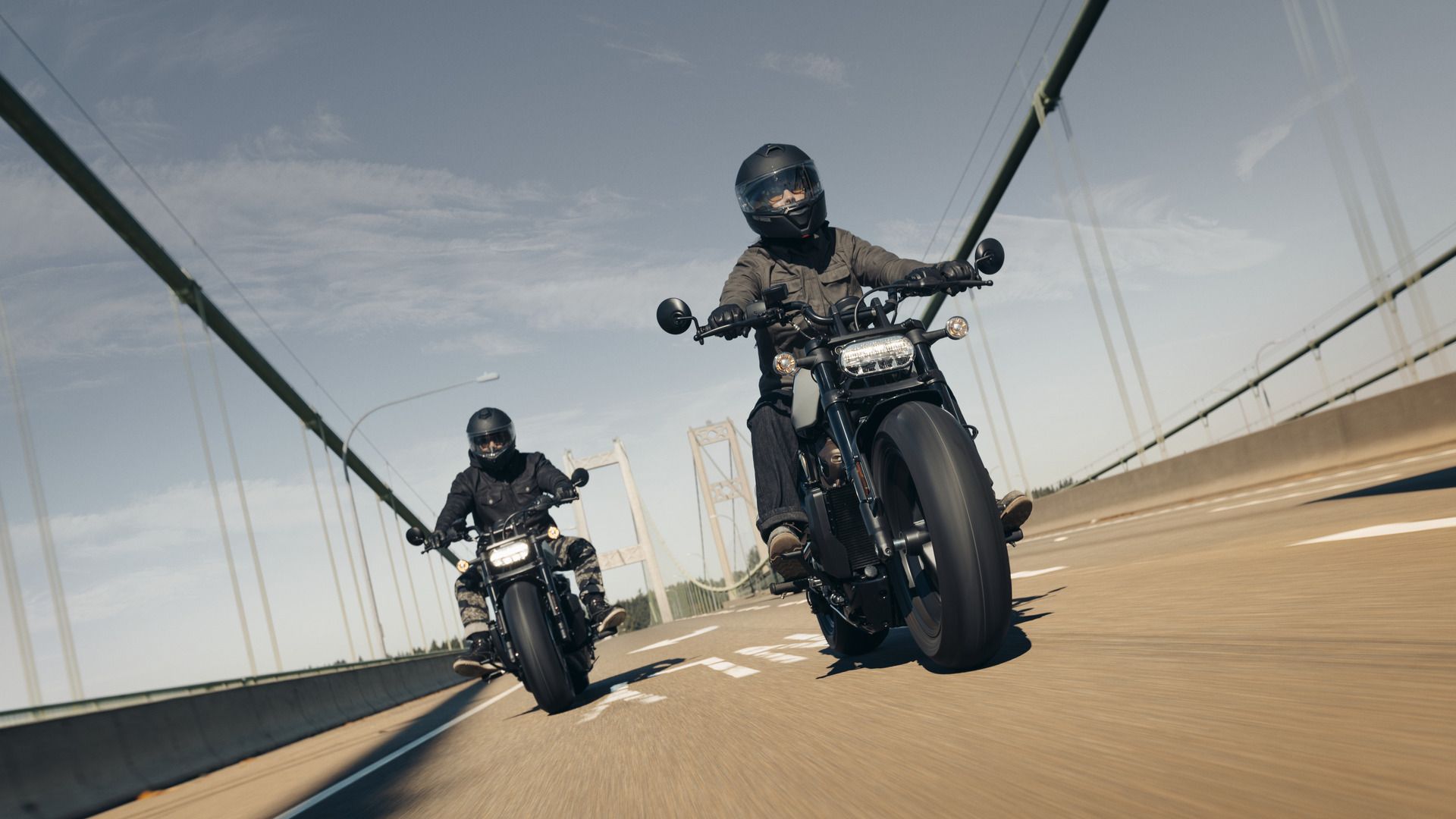
The Sportster S features a perfect blend of power and comfort, along with a V-twin engine!
The Heritage Classic is built on the chassis common to all Softail models, featuring hidden rear monoshock suspension. Up front, it utilizes dual bending valve telescopic forks, while the only available adjustment is preload at the rear. Given the design of its chassis and suspension, the Heritage Classic is one of the most customizable Harleys, making it an excellent choice for those seeking a tailored ride. The braking system is sufficiently robust, equipped with a four-piston fixed caliper at the front, along with ABS featuring a cornering function and a tire pressure monitoring system.
Chassis | Mild steel tubular frame with backbone |
Front Suspension | 49 mm dual bending valve telescopic forks with dual rate springs; 5.1 inches travel |
Rear Suspension | Hidden monoshock with preload adjustment; 4.4 inches travel |
Front Tire And Wheel | 130/90 B16 |
Rear Tire And Wheel | 150/80 B16 |
Front Brakes | 300 mm disc with four piston fixed caliper |
Rear Brakes | 292 mm disc with two piston floating caliper |
Fuel Tank Capacity | 5 Gallons |
Length/Width/Height | 95.1/36.6/53.9 inches |
Wheelbase | 64.2 inches |
Rake | 30 degrees |
Trail | 5.5 inches |
Seat Height | 26.8 inches |
Ground Clearance | 4.7 inches |
Curb Weight | 728 LBs (wet) |
The Heritage Classic features a tank-mounted instrument cluster designed with a retro aesthetic. It includes a reverse LCD showing fuel, odometer, trip meter, and various other functionalities, while the upper portion emphasizes an analog speedometer along with traditional LED warning lights. Beneath this, additional indicators for high beam, neutral, and oil pressure are present, albeit not integrated with the main warning lights.
Customization options abound, with paint jobs potentially increasing the cost by up to $850, while cross-spoke, tubeless rims add another $800. A diverse array of extras is available, including but not limited to a sissy bar, top box, enhanced touring seat, and a different air cleaner. The most comprehensive option is the long-haul package, which encompasses various features including the top box and improved touring seat, priced at $2,195. As a beloved model for custom bike builders thanks to its Softail heritage, the Heritage Classic can transform into virtually anything you desire with enough investment.
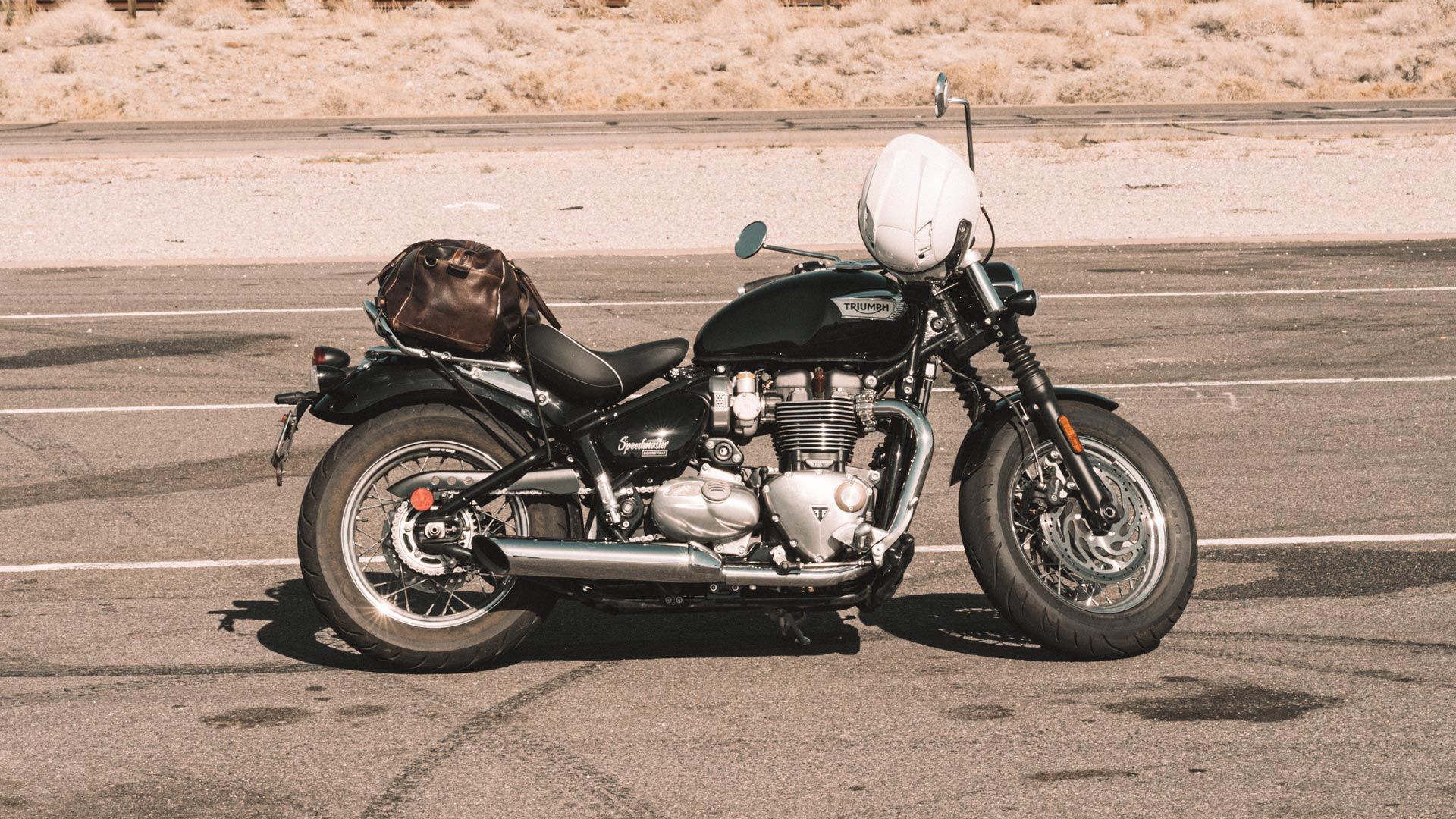
If you enjoy cruising with a passenger, these 10 models will ensure a comfortable ride for both!
The Heritage Classic occupies a niche that few can effectively fill. Currently, Indian is the sole competitor offering a retro-styled cruiser that balances modern performance with the Super Chief Limited. However, it features a fully air-cooled engine, giving Harley the edge in terms of performance. If you’re inclined toward a performance-centric choice with less emphasis on traditional aesthetics, the Triumph Rocket 3 GT offers spectacular performance and technology, all while sporting a design reminiscent of the 2000s.
Model | Harley-Davidson Heritage Classic | Indian Super Chief Limited | Triumph Rocket 3 GT |
Price | $22,999 | $21,999 | $25,795 |
Engine | 45 degree V-twin, air cooled cylinders/oil cooled heads | 49 degree V-twin, air cooling | Inline three cylinder, liquid cooled |
Displacement | 1,923 cc | 1,890 cc | 2,458 cc |
Power | 98 HP @ 4,600 RPM | ~90 HP @ NA RPM | 179.5 HP @ 7,000 RPM |
Torque | 120 LB-FT @ 2,500 RPM | 120 LB-FT @ 2,900 RPM | 166 LB-FT @ 4,000 RPM |
Curb Weight (Wet) | 728 LBs | 739 LBs | 699 LBs |

Kawasaki’s first cruiser for the Indian market, the Vulcan S, takes on Harley-Davidson’s most affordable bike in the country, the …
source

These days, cruiser bikes are evolving in exciting ways. On one side, they’re increasingly packed with technology, enhancing both speed and safety, which is fantastic, but this also results in soaring prices. Conversely, there are traditional cruisers that embody classic design and aesthetic appeal, yet they are rather impractical for longer journeys or accommodating more than one rider.
However, there exists a sweet spot—where a cruiser can combine the stunning visual appeal of a custom motorcycle with the performance characteristics of contemporary standard bikes. Ideally, this would also include practical ownership aspects, such as reliability or affordability, or even a blend of both. With advancements in technology, particularly in powertrains and platform sharing, achieving this balance is quite feasible.
To ensure the accuracy of this article, information was gathered from credible sources, including the official websites of the respective manufacturers.
Harley-Davidson has built a solid reputation for producing quality cruisers and touring motorcycles, yet it sometimes clings to tradition a bit too tightly, potentially alienating new riders. This can make entry into the brand less appealing for first-time buyers, with the value proposition of metric cruisers often being more sensible.
Introducing the Sportster S, a fresh take that’s distinctively modern and unlike any Sportster seen before. Its design evokes the flat track racers of the 1970s but delivers modern performance and features that can compete with any metric cruiser in its price range. Plus, it’s an American-made V-Twin, which carries its own weight. For these reasons, the Harley-Davidson Sportster S is the most balanced choice for 2025.
The Sportster S’s engine is remarkable—not just for Harley-Davidson, but when stacked against all manufacturers and bike types. It features the Revolution Max engine, sharing a common foundation with the Pan America 1250. Essentially, it features the same block and pistons but emphasizes torque, hence the name Revolution Max 1250 ‘T’. Critical stats like bank angle, bore, stroke, and variable valve timing for both intake and exhaust valves are incorporated. Unlike the Milwaukee Eight series, it utilizes a DOHC setup instead of pushrods.
With a peak performance of 121 horsepower and 93 pound-feet of torque, it stands out among modern cruisers, only rivaled by the age-old Suzuki Boulevard M109R. The six-speed transmission introduces modernity, though Harley could have included a quickshifter. It does, however, come with an assist and slipper clutch, and the low-maintenance final drive utilizes a traditional belt. A six-axis IMU facilitates traction control along with drag-torque slip control featuring cornering functionality for enhanced safety. With a by-wire throttle, there are five ride modes available, including two that can be customized.
Engine Configuration | Revolution Max 1250T 60-degree V-twin, DOHC, 4 valves per cylinder with variable valve timing on all valves, liquid-cooled |
Displacement | 1,252 cc |
Bore x Stroke | 105 x 72.3 mm |
Compression Ratio | 12.0:1 |
Power | 121 HP @ 7,500 RPM |
Torque | 93 LB-FT @ 6,000 RPM |
Fuel System | Electronic sequential port fuel injection |
Transmission | 6-speed manual with assist and slipper clutch |
Final Drive | Belt drive |

This cruiser bike is compact but packs a punch with an 85+ horsepower parallel-twin engine derived from an ADV.
The Sportster S boasts a chassis that is as contemporary as its engine. The engine itself is a stressed component of the frame, which features a trellis structure enhanced with MIG welding for the tubes. It also incorporates a fully adjustable suspension in line with its performance orientation, while the rear shock employs a linkage-type for optimized performance. The front brake comes equipped with a radially mounted four-piston fixed caliper.
Interestingly, the swingarm mirrors a trellis frame design, composed of welded steel tubes that contribute to weight savings. While a second front disc would enhance braking consistency at higher speeds, the six-axis IMU provides cornering-enhanced ABS and wheel lift mitigation for added safety.
Chassis | Steel trellis frame |
Front Suspension | 43 mm inverted forks, fully adjustable, 3.6 inches travel |
Rear Suspension | Linkage mounted monoshock, fully adjustable, 2 inches travel |
Front Tire And Wheel | 160/70 R17 73V |
Rear Tire And Wheel | 180/70 R16 77V |
Front Brakes | Single 320 mm disc, four-piston radially mounted fixed caliper |
Rear Brakes | 260 mm solid uniform expansion disc with single-piston floating caliper |
Fuel Tank Capacity | 3.1 Gallons |
Curb Weight | 502 LBs (wet) |
Length/Width/Height | 89.4/33.2/42.9 inches |
Wheelbase | 59.8 inches |
Rake | 30 degrees |
Trail | 5.8 inches |
Seat Height | 28.9 inches (laden) |
Ground Clearance | 3.5 inches |
Curb Weight | 502 LBs (wet) |
The Sportster S is designed with a single-seater aesthetic, featuring a shortened subframe for a robust appearance. While it is technically possible to accommodate a passenger, optional footrests come at an additional cost ($353.35). The rider benefits from a four-inch circular TFT screen that provides access to the various features outlined above. Paint options like Brilliant Red ($750) and Mystic Shift ($900) are excellent upgrades, especially the latter, which shifts tones with the light. Other enhancements include mid-mounted footpegs ($693.95) for a sportier feel, or touring upgrades like a Sundowner seat ($710.85) and a compact windshield ($459.95).

Form, function, and flexibility – these 10 cruisers have it all.
The Sportster S stands out in its price range, yet there are alternative options for those seeking a balanced cruiser. The Indian 101 Scout offers superior braking performance but has lower power and more weight. Meanwhile, the Honda Rebel 1100 is a solid offering available with an automatic transmission, yet it falls short with under 90 horsepower in performance compared to the Sportster S.
For those seeking performance, the Suzuki Boulevard M109R boasts the largest and most powerful engine below $20,000 and superbike-quality brakes, but has no safety features. Other unconventional choices include the BMW R 12 nineT and the Harley-Davidson Nightster Special, both leaning towards a sportier design.
Model | Harley-Davidson Sportster S | Indian 101 Scout | BMW R 12 nineT | Suzuki Boulevard M109R B.O.S.S. | Honda Rebel 1100 SE DCT | Harley-Davidson Nightster Special |
Price | $15,999 | $16,999 | $16,595 | $15,599 | $11,099 | $12,499 |
Engine | 1252 cc V-twin | 1,250 cc V-twin | 1,170 cc boxer twin | 1,783 cc V-twin | 1,084 cc parallel twin | 975 cc V-twin |
Power | 121 HP @ 7,500 RPM | 111 HP @ 7,250 RPM | 109 HP @ 7,000 RPM | 123 HP @ 6,200 RPM | 87.1 HP @ 7,250 RPM | 91 HP @ 7,500 RPM |
Torque | 93 LB-FT @ 6,000 RPM | 82 LB-FT @ 6,300 RPM | 85 LB-FT @ 6,500 RPM | 118 LB-FT @ 3,200 RPM | 72.2 LB-FT @ 4,750 RPM | 72 LB-FT @ 5,750 RPM |
Final Drive | Belt | Belt | Shaft | Shaft | Chain | Belt |
Curb Weight (Wet) | 502 LBs | 549 LBs | 485 LBs | 764 LBs | 498 LBs | 483 LBs |

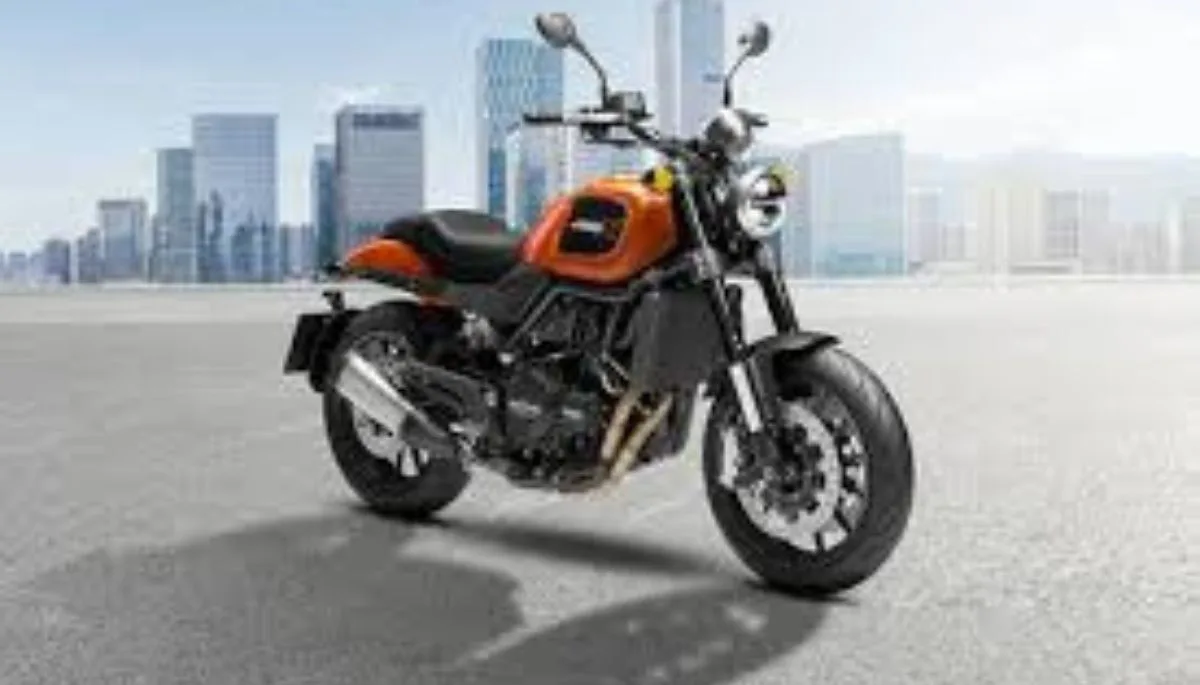
Harley Davidson X500: In India, various motorcycle manufacturers are introducing bikes that offer impressive features and specifications. If you’re a fan of Harley-Davidson and are considering purchasing a bike, the Harley Davidson X500 is an excellent choice, poised to compete strongly in this segment. If you’re searching for such a bike, further details are provided below.
Let’s discuss the aesthetics of this bike; it presents a muscular and impressive design. The styling elements are reminiscent of Harley’s classic street bikes but come with a modern touch, featuring LED lighting, a digital instrument cluster, and a sleek, minimalist rear. The upright riding posture and wide handlebars indicate that it’s designed for comfort, whether you’re commuting daily or enjoying weekend rides in the city.
This bike is powered by a 500 cc liquid-cooled parallel twin engine, delivering an impressive 47 PS and 46 Nm of torque. The updated engine is paired with a 6-speed manual gearbox that features a slipper clutch, ensuring ease of use. If you’re a motorcycle enthusiast looking for a bike suited for long tours, this could be the ideal option. The company also promises a mileage of around 35 kmpl.
Regarding pricing, Harley Davidson has set the starting price at approximately 6 lakh rupees ex-showroom. The bike is available in various color options in the market.
While the company has not released comprehensive details about this bike, they have announced that it will be launched in India in 2025.

Initially designed for a relaxed riding experience, cruisers offer the joy of feeling the breeze and witnessing the scenery pass by. Like other motorcycle categories, cruisers have diversified, presenting various styles ranging from basic starter models to traditional variants, as well as sportier iterations that embrace aggressive cornering.
Nevertheless, if you’re seeking a versatile cruiser that manages everything effortlessly, your search will be challenging. The Harley-Davidson Sportster S is one contender, although many purists debate its classification as a true cruiser based on its frame and engine. Options like the Indian Super Chief and Harley-Davidson Fat Boy exist, yet they prefer a more leisurely pace. To discover a cruiser capable of it all without breaking a sweat, you might need to venture across the Atlantic.
This article’s information has been carefully compiled from reputable sources, including the official websites of the manufacturers.
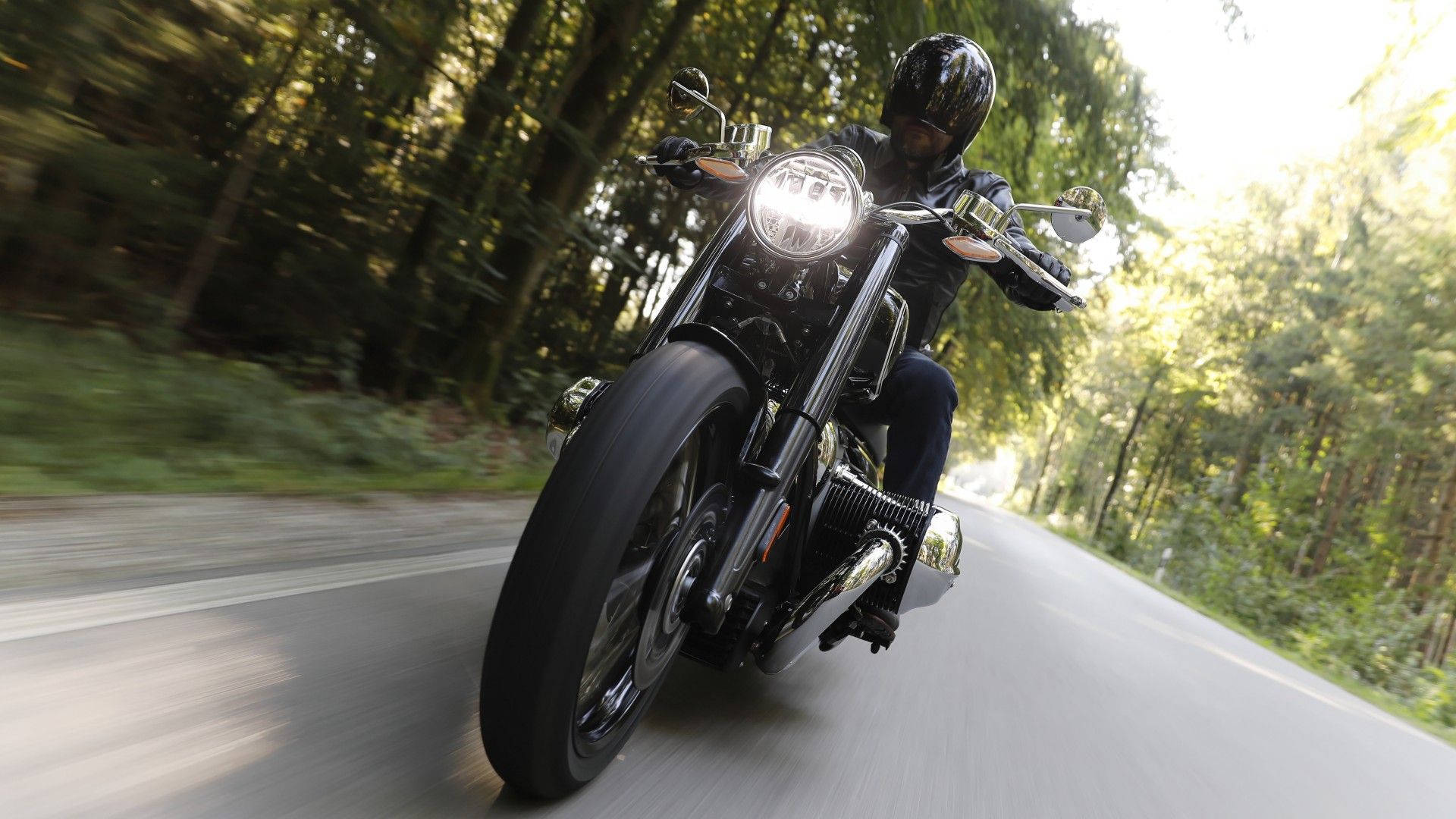
Related
With the motorcycle industry in a slump, some of the most expensive cruisers are now genuinely affordable on the used market
Tracing its origins back to the early 2000s when the demand for powerful motorcycles was high, the Rocket 3 comes equipped with a massive engine, setting it apart from standard cruisers. Triumph pioneered a unique longitudinal inline three-cylinder engine, surpassing many small cars in displacement. Now in its second generation, Triumph has not only increased the engine’s size but also prioritized making the Rocket 3 lighter and sportier, embodying the cruiser that excels across all scenarios without undue effort.
Triumph aimed to set the record for the largest production motorcycle engine and succeeded with the original Rocket 3’s 2,294 cc engine. This achievement outclassed Kawasaki’s recently launched Vulcan VN2000, which holds the record for the largest production twin till recently eclipsed by the Harley-Davidson CVO Road Glide RR. The second generation of Rocket 3 increased displacement to an impressive 2,458 cc.
Powering up to an astonishing 180 horses and delivering 166 pound-feet of torque, the torque alone rivals that of many small cars, peaking at a manageable 4,000 RPM. This engine exemplifies the notion that ‘there’s no substitute for displacement’; it lacks variable valve timing or any electronic upgrades.
This remarkable power is transmitted through a six-speed gearbox coupled with a hydraulically assisted clutch, while a shaft drive connects the engine’s output to the rear wheel. The by-wire throttle includes ride modes, and a six-axis IMU enables lean-sensitive traction control as part of the electronics package, featuring four ride modes and cruise control.
Engine Configuration | Inline three cylinder, liquid cooled, DOHC, 4 valves per cylinder |
Displacement | 2,458 cc |
Bore x Stroke | 110.2 x 85.9 mm |
Compression Ratio | 10.8:1 |
Power | 179.5 HP @ 7,000 RPM |
Torque | 166 LB-FT @ 4,000 RPM |
Fuel System | Electronic Fuel Injection |
Transmission | 6 speed manual transmission, hydraulic clutch, torque assist |
Final Drive | Shaft drive |
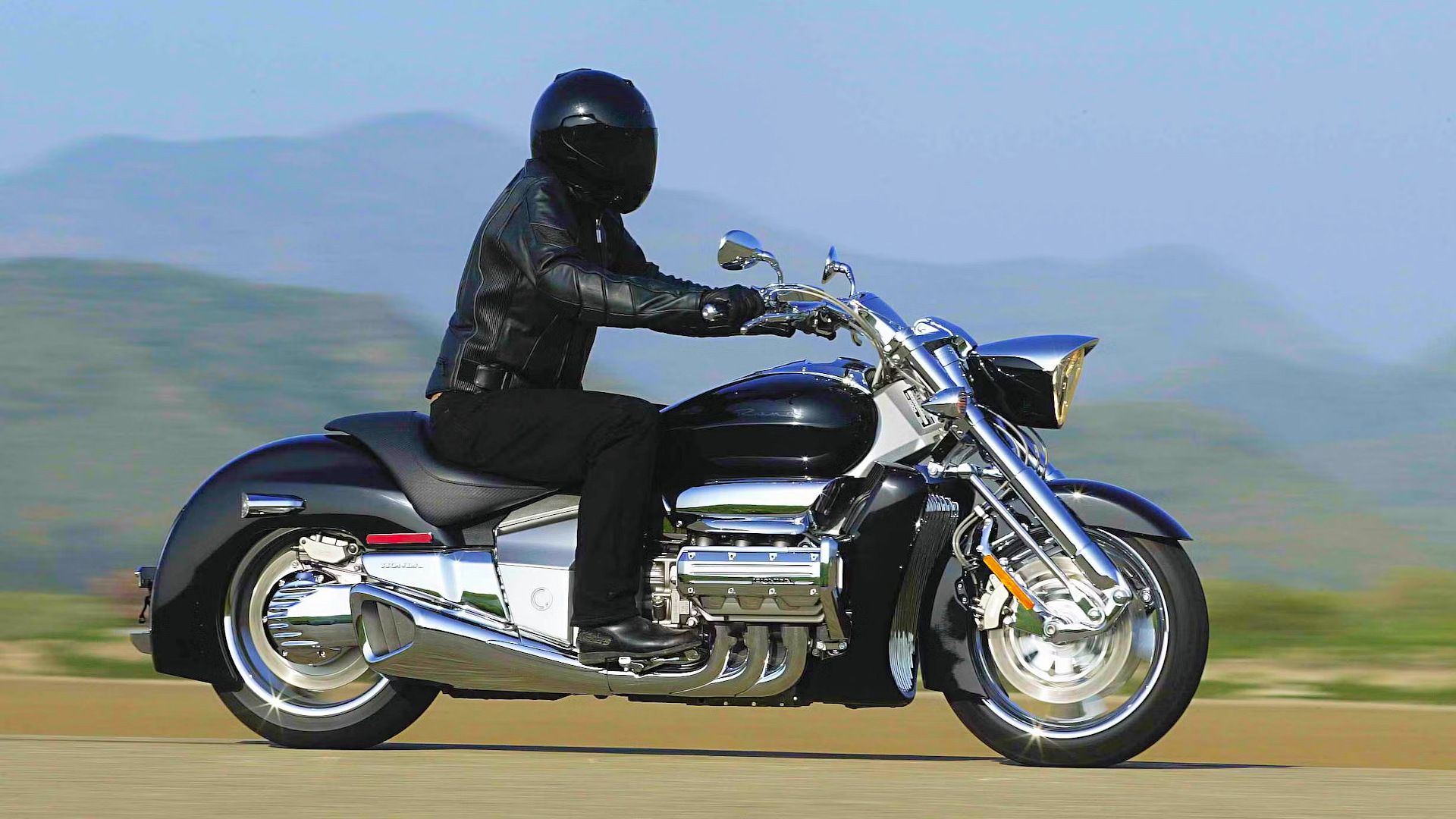
Related
These powerful cruisers from the 2000s cost as low as
The Rocket 3 features a twin-spar aluminum frame designed to accommodate the considerable engine. Utilizing aluminum allows for weight reduction, complemented by cast aluminum wheels. Additionally, the frame incorporates a single-sided swingarm, elegantly showcasing the driveshaft while revealing the attractive rear wheel design.
Showa provides the steering and rear suspension, both fully adjustable, with remote hydraulic preload adjustment for the rear shock. Triumph has not cut corners on braking, employing radially mounted Brembo Stylema calipers at the front, with a Brembo M4.32 at the rear—calipers typically found on sportbikes, ensuring they are well-equipped to control this nearly 700-pound cruiser. A six-axis IMU ensures lean-sensitive ABS and hill-hold control.
Chassis | Full aluminum |
Front Suspension | 47 mm inverted Showa cartridge fork, fully adjustable; 4.7 inch travel |
Rear Suspension | Showa piggyback single shock, fully adjustable with remote hydraulic preload adjustment; 4.2-inch travel |
Front Tire And Wheel | 150/80 R17 |
Rear Tire And Wheel | 240/50 R16 |
Front Brakes | Dual 320mm discs with radial-mount four-piston fixed Brembo M4.32 Stylema monobloc calipers |
Rear Brakes | 300 mm disc with four-piston fixed Brembo M4.32 Stylema monobloc caliper |
Length/Width/Height | 93.1/36/46.6 inches |
Fuel Tank Capacity | 4.76 Gallons |
Wheelbase | 66 inches |
Rake | 27.9 degrees |
Trail | 5.3 inches |
Seat Height | 30.4 inches |
Ground Clearance | NA inches |
Curb Weight | 699 LBs (wet) |
The Rocket 3 aims to exemplify muscle cruisers, which is clear from its immense engine and superior suspension and braking system. However, it lacks some luxurious features typically associated with superbikes. Although it offers a TFT display, conveniences such as Bluetooth connectivity for phone, music, and navigation are optional extras. Other options include a two-way quickshifter and a tire pressure monitoring system—features that ideally should come standard.
For added versatility, luggage options include 6.6-gallon sports panniers, a 2.4-gallon quick-release tail pack, a 3.2-gallon tank bag, and a passenger backrest rack. Additionally, if you’ve purchased a Rocket 3 R and wish for a GT model, you can easily swap footrests at the dealership, adding a nice touch of customization.
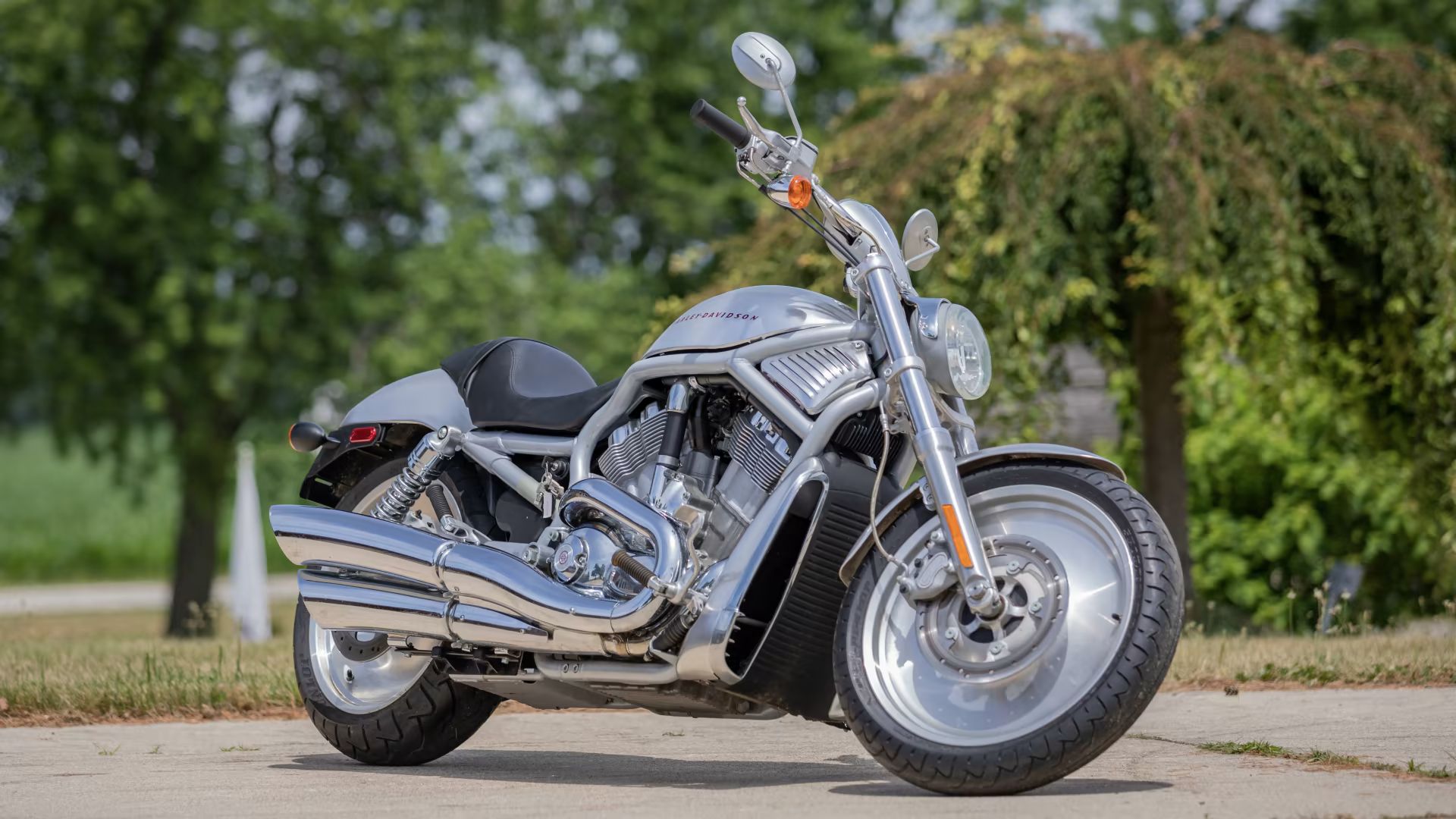
You can get some of the fastest muscle cruisers on the used market for less than $10,000
The Rocket 3 has been crafted and engineered to occupy a unique space in its class, largely succeeding in that effort. There are sporty cruisers like the Harley-Davidson Sportster S, but they lack the robust power offered by the Rocket 3. If torque is your priority, options like the Harley-Davidson Fat Boy and Indian Super Chief are available, yet they fall short in terms of their power metrics.
There’s only one competitor that poses a true challenge to the Rocket 3 GT: the Ducati XDiavel V4. This bike features a comparably potent engine, along with unique characteristics such as a counterrotating crankshaft and a lighter overall weight—allowing the XDiavel to excel in corners while being slightly behind the Rocket 3 on straightaways. Its superior electronics package further enhances it as a lighter and sportier alternative to the Rocket 3.
Model | Triumph Rocket 3 GT | Ducati XDiavel V4 |
Price | $25,795 | $28,995 |
Engine | Inline three cylinder | 90 degree V4 |
Displacement | 2,458 cc | 1,158 cc |
Power | 179.5 HP @ 7,000 RPM | 168 HP @ 10,750 RPM |
Torque | 166 LB-FT @ 4,000 RPM | 93 LB-FT @ 7,500 RPM |
Curb Weight (Wet) | 699 LBs | 505 pounds |

The Harley-Davidson Motor Company introduced its first custom cruiser, the Super Glide, which remains a favorite among seasoned riders, often regarded as one of the finest bikes ever produced in Milwaukee. This narrative isn’t solely about a specific model; it’s a celebration of a unique frame, powerful engine, and innovative motor mounts that created magic. Here’s the iconic Harley cruiser that should never have been discontinued.
The information presented in this article has been meticulously curated from Harley-Davidson, Honda, and my expertise as a certified Harley-Davidson mechanic to ensure accuracy and relevance.
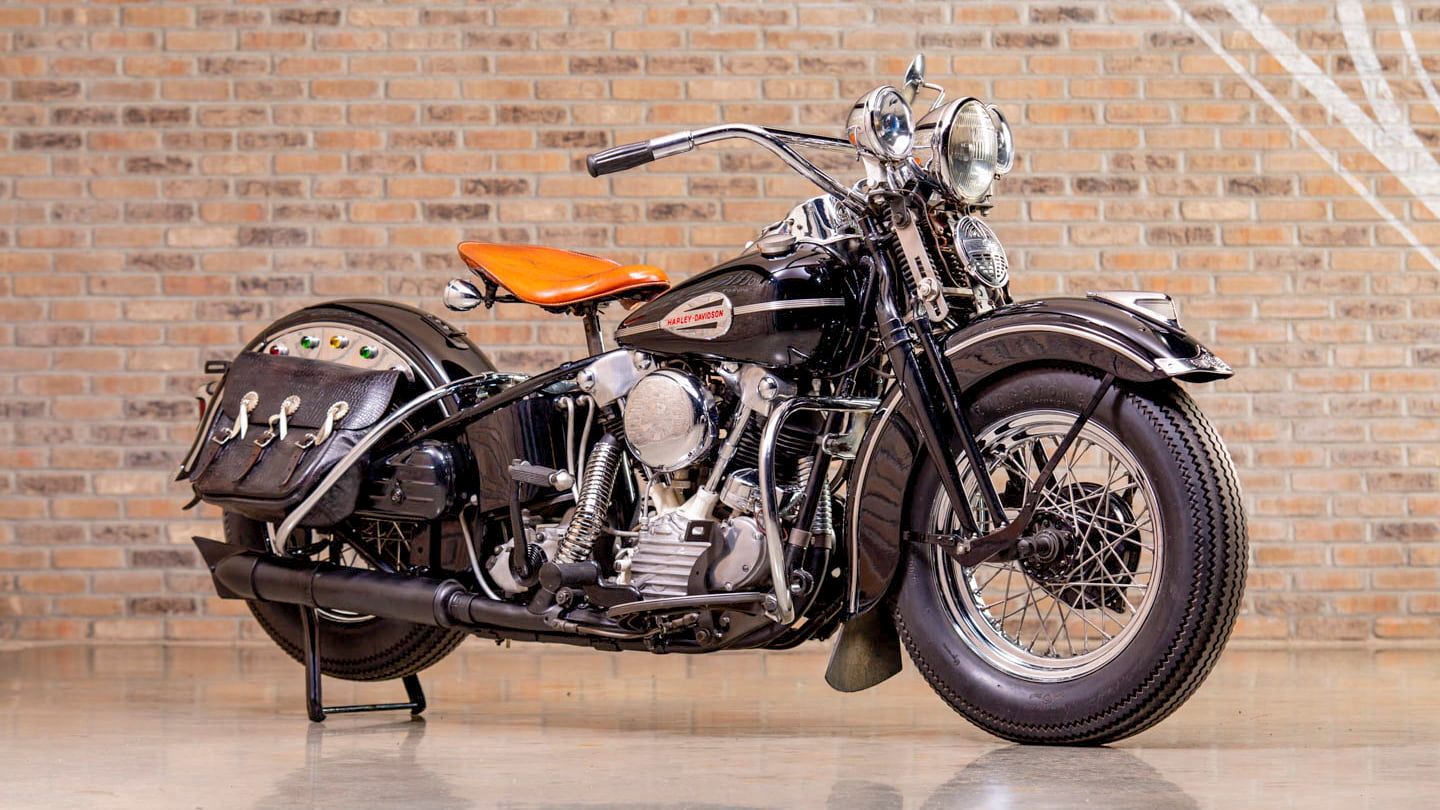
A long and illustrious history, but some models stand out more than others
The Super Glide originated on the FX frame, paired with the Shovelhead engine in 1971, serving as a bridge between the large FLT touring bikes and the sleek XL Sportsters. With its robust frame and slender front end, it stood out. By 1982, this top-notch frame made its way into the Super Glide II, though initially criticized as “too Japanese,” it earned high praise for its handling and comfort once riders experienced the FXR system.
This framework was designed to take on Japanese cruisers. Interestingly, this sentiment also surrounded the Dyna frame, which, over time, proved itself as well. The model we emphasize here retains the FXR frame and engine mount system while featuring the 80 cubic-inch Evolution Big-Twin engine. Together, we believe this represented Harley-Davidson’s best lineup until its discontinuation in 1994, leading to a variety of popular variants.
The 1994 Super Glide II marked the final model in the FXR lineage, before the Dyna frame took its place. The Evolution engine was introduced in 1984, replacing the older Shovelhead as the primary Big-Twin engine, powering models from ’84 to ’94. This engine brought a significant advancement in engineering to The MoCo, standing in stark contrast to the previously troublesome “Troublehead.” Its tight tolerances and low wear made it one of Harley’s finest engines.
While limiting custom modifications to official Screamin’ Eagle “Stage” kits and maintaining regular service, these bikes held up remarkably well. While performance may seem lacking by today’s standards, it’s important to note that when the FXR Super Glide II was launched, the maximum Interstate speed limit was 55 MPH, making it adequate for its time.
Engine | Evolution Big-Twin |
Displacement | 1,337 cc |
Compression | 8.5 : 1 |
Power | 50 HP @ 5,000 RPM |
Torque | 67 LB-FT @ 3,600 RPM |
Transmission | Five-Speed |
Top Speed | 105 MPH |
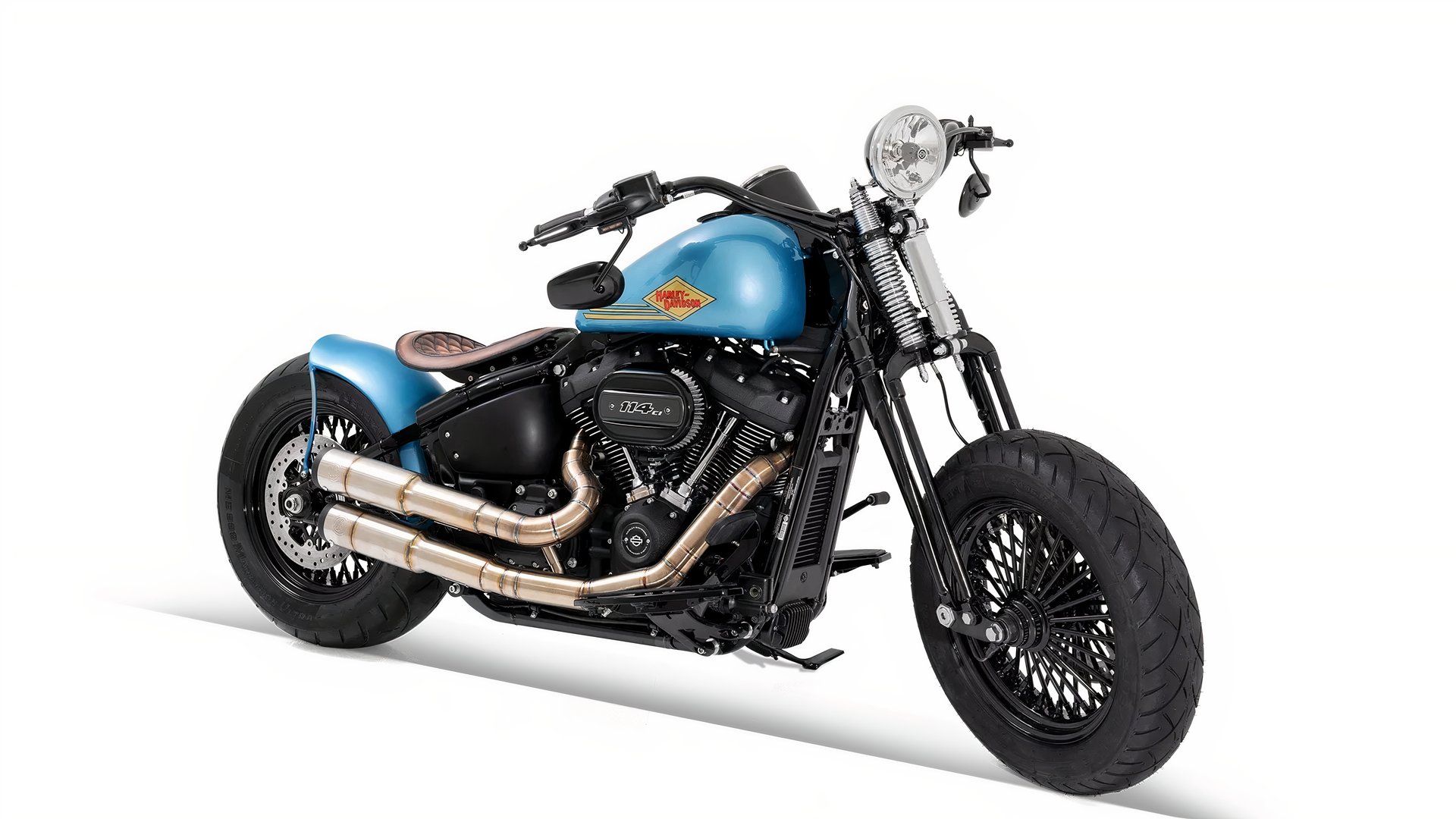
This custom Harley-Davidson cruiser flaunts cool old-school-vibing components.
The FXR Super Glide II features a classic Harley design, with a mild-steel frame supporting the engine and providing protection for the cases. With a 30-degree rake, it sports a chopper influence that enhances its custom appeal and ensures impressive handling for its weight. Narrow triple trees secure 39 mm Showa fork tubes at the front, while dual rear coil-over shocks manage the ride, adjustable only for preload.
Thin-spoke cast alloy wheels complete the setup, complemented by single discs and hydraulic calipers at each end. What sets this bike apart is its rubber-mount system, which effectively minimizes engine vibrations, providing an unparalleled riding experience. While this enhancement was a welcome change, it did require careful alignment of the engine, transmission, and swingarm assembly—a task that was intricate but ultimately rewarding.
Frame | Mild-steel, double-downtube/cradle |
Front Suspension | 39 mm Showa® cartridge |
Rear Suspension | Dual coil-over shocks |
Rake/Trail | 30°/ 4.7 inches |
Wheels | Cast-aluminum |
Front Tire | 100/90-19 |
Rear Tire | 130/90-16 |
Front Brake | 292 mm disc, single-piston caliper |
Rear Brake | 292 mm disc, single-piston caliper |
The Super Glide was intended to embody a showroom custom, but early design elements, like the distinctive boat-tail rear fender, were replaced by more conventional options due to their limited appeal. It featured struts designed to support the lengthy front fender while providing a style reminiscent of FX models, complete with a one-piece fuel tank in the teardrop design typical of larger FL machines.
A chrome console covering the small tank gap, which houses the speedometer and wiring, mirrors what’s found on split-tank touring models. The low, 26-inch seat height, combined with mid-mount foot controls and buckhorn handlebars, creates a rider-friendly triangle. Though marketed as a cruiser, long-distance riders will attest to its capacity for covering miles comfortably, rivaling traditional touring motorcycles.
Length | 92.8 inches |
Width | 34 inches |
Height | 45.8 inches |
Seat Height | 26 inches |
Wheelbase | 60 inches |
Ground Clearance | 5.1 inches |
Fuel Capacity | 4.2 gallons |
Curb Weight | 604 lbs |
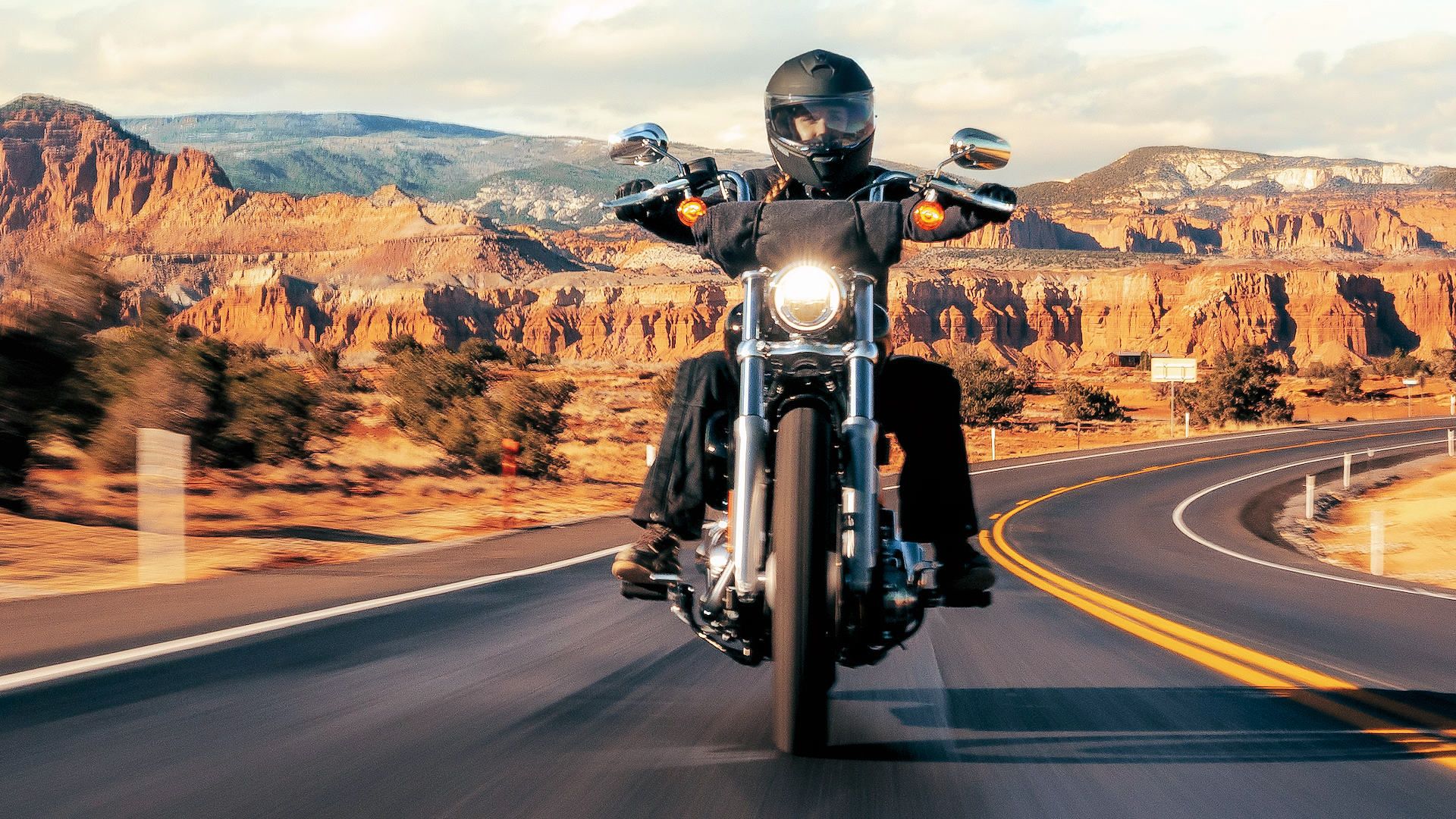
We will miss this old-school Harley’s back-to-basics nature.
The FXR Super Glide II served as a foundational model and led to various successful variants. Among these, the most prominent is the Low Rider, which continues to thrive today with multiple frame-engine configurations. The model maintains a 26-inch seat height, preserving the same frame design, engine mounting hardware, and specifications. Additionally, the FXRT Sport Glide emerged as a touring variant of the FXR Super Glide II, equipped with a prominent fairing and stock luggage.
The Japanese competition in the cruiser market was fierce during that time, with the Honda VT1100C Shadow standing out as a noteworthy contender. It mimicked Harley’s aesthetics featuring a boat-tail rear fender that had previously garnered mixed responses from U.S. buyers. The teardrop-shaped fuel tank contributed to the bike’s visual appeal, while the extended front forks added a chopper-style vibe. Powering the Shadow was a 1,099.2 cc V-twin engine generating 67 horsepower and 75 pound-feet of torque, surpassing Harley’s performance metrics significantly. The VT1100C rolled off dealer floors at $9,499 in 1995.
Model | FXR Super Glide II | Honda VT1100C Shadow |
Engine | V-twin | V-twin |
Displacement | 1,337 cc | 1,099.2 cc |
Compression | 8.5 : 1 | 8.5 : 1 |
Power | 50 HP @ 5,000 RPM | 67 HP @ 5,500 RPM |
Torque | 67 LB-FT @ 3,600 RPM | 75 LB-FT @ 3,000 RPM |
Transmission | 5-Speed | 5-speed |
Top Speed | 105 MPH | 107 MPH, reported |

2025 Harley-Davidson Street 500 – The Ultimate Urban Cruiser? 🏍️ Power, Style & Comfort! Description: The 2025 …
source

After riding the all new PAN AMERICA, I secured myself a demo on the Harley Davidsons STREET BOB. With it being my first ever …
source